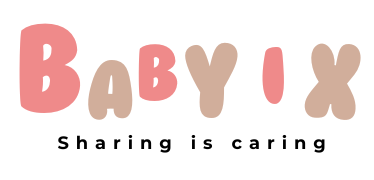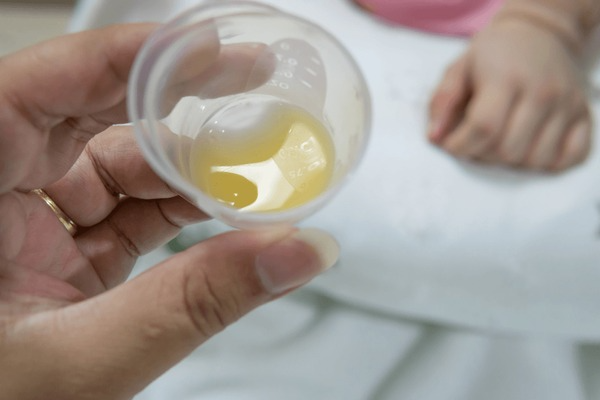Breastfeeding Engorged? Get Relief with These Helpful Tips

As a breastfeeding mom, you’re not alone if you’re dealing with engorged breasts. This issue affects about 60-80% of new moms. It can be uncomfortable and painful, but there are ways to feel better. We’ll talk about what causes engorgement, its signs, and how to get relief.
Understanding engorgement is the first step to feeling better. It usually happens in the first few days after birth. Breasts become very full, hard, swollen, and painful. To ease this, it’s important to breastfeed correctly. This can help prevent engorgement and blocked ducts, giving you much-needed relief.
Key Takeaways
- Breast engorgement affects about 60-80% of new moms, causing discomfort and pain in engorged breasts.
- Proper positioning and attachment during breastfeeding can help reduce engorgement and blocked ducts, providing relief.
- Techniques like hand expressing milk or using reverse pressure softening can relieve engorgement and provide relief.
- Regular breast massage during feedings can stimulate optimal milk flow and help prevent engorgement.
- Alternating feeding positions and breasts during nursing can help ensure complete drainage of milk from the breasts, reducing the risk of engorged breasts.
- Gradual weaning is advised to prevent sudden drops in milk production, which can lead to engorgement and discomfort in engorged breasts.
- Health services and support for breastfeeding mothers can be accessed through helplines, providing guidance on breastfeeding engorgement and breast relief.
Understanding Breast Engorgement During Breastfeeding
Breast engorgement is a common problem for breastfeeding moms. It happens when there’s too much blood and lymph in the breasts. This can be due to not emptying the breasts fully or having too much milk.
It’s important to know the difference between normal breast fullness and engorgement. Normal fullness feels heavy or tender. But engorgement is much worse.
Engorgement often starts in the first few days after birth. It can take weeks for milk production to stop after you stop breastfeeding. Regular breastfeeding helps, but missing feeds can make it worse.
To deal with engorgement, knowing the signs is key. Look out for swelling, pain, and firmness in your breasts. Sometimes, engorgement doesn’t start until day 9 or 10 after birth.
It’s more common in people who pump milk. This is because pumping doesn’t match milk production and removal. Knowing the signs and the difference between normal fullness and engorgement helps moms manage discomfort and avoid problems.
Signs and Symptoms of Engorged Breasts
It’s key for new moms to know the engorged breast symptoms to get relief and keep breastfeeding easy. Breast engorgement signs include swelling, pain, and breastfeeding discomfort. Sometimes, you might also feel fever, chills, or sweat.
Breast engorgement usually starts 2 to 4 days after birth. This is when milk production goes up a lot. Your breast might get warmer, around 37.5 to 38.3 °C (99 to 101 °F). It can happen in one or both breasts and not just for those breastfeeding.
To ease breastfeeding discomfort and avoid problems, new moms should nurse at least 8 times in 24 hours. A bra that doesn’t fit right or tight clothes can make things worse. Nursing or pumping every one to three hours helps prevent engorgement.
About 50% of breastfeeding moms will see breast engorgement signs early on. If breast engorgement lasts more than three to four days or you have a fever, see a doctor. They can check for mastitis.
How to Relieve Engorged Breasts While Breastfeeding
Relieving engorged breasts needs a mix of techniques and methods. Techniques like breast relief can lessen discomfort and ensure full emptying. Breastfeeding latching is a key way to relieve engorgement by emptying the breast and stopping more engorgement.
Getting the baby to latch properly is vital. It ensures they feed well and the breast empties fully. Hand expression is also helpful, mainly when the baby doesn’t nurse often enough. It softens the breast, making it easier for the baby to latch.
- Applying a cold compress to reduce swelling and pain
- Taking a warm shower to stimulate milk flow
- Gentle massage before and during nursing to improve milk flow
- Allowing the baby to nurse as long as they want to help empty the breast effectively
By following these tips and combining breast relief techniques, latching, and hand expression, mothers can manage engorged breasts. This ensures a comfortable and successful breastfeeding journey.
Cold and Heat Therapy for Engorgement
Cold and heat therapy are great ways to ease breast engorgement. Many moms find relief by using cold or heat on their breasts. Research shows that up to 40% of new moms face discomfort in the first four days. Cold and heat can help manage these symptoms.
Cold therapy can help shrink swollen breasts and ease pain. Heat therapy, on the other hand, boosts blood flow and helps milk letdown. It’s important to use safe temperatures to avoid discomfort or injury. For example, use a cold compress for 15-20 minutes, and heat therapy for 10-15 minutes.
Studies suggest that hot/cold packs work better than acupressure for engorgement. Gua sha therapy also helps. Always talk to a healthcare professional before trying new therapies, if you have severe symptoms or health issues.
When using cold or heat, follow safety guidelines. Avoid extreme temperatures and don’t use it for too long. Adding cold and heat therapy to your routine can help you feel better. This makes breastfeeding easier for you and your baby.
Natural Remedies for Breast Engorgement
For breastfeeding moms with breast engorgement, natural remedies can offer extra breast engorgement relief and breastfeeding support. Studies show that cabbage leaves might help, with two-thirds of moms feeling better. But, it’s important to remember that cabbage leaves might not work for everyone, and more research is needed.
Other natural options, like herbal supplements and changing your diet, can also help. Drinking more water and eating foods full of omega-3 fatty acids can reduce swelling. Herbal supplements like fenugreek and blessed thistle might also help with milk production and engorgement.

Massage therapy, protease, and serrapeptase have also been studied for their benefits. It’s key to talk to a healthcare professional before trying new remedies, if you’re dealing with severe engorgement. Adding these natural remedies to your routine can make breastfeeding more comfortable and successful.
Essential Tools and Products for Relief
Having the right tools and products can make a big difference in relieving engorged breasts. Many women find that using breast pumps helps to fully empty the breasts. This reduces discomfort and swelling. Also, cooling packs can provide immediate relief from pain and inflammation.
Supportive nursing bras are also key for reducing discomfort and promoting good breast health. These bras offer extra support and comfort. They make it easier to breastfeed and manage engorged breasts.
- Breast pumps, such as electric or manual pumps
- Cooling packs, such as cold compresses or cold gel packs
- Supportive nursing bras, such as wireless or underwire bras
By using these essential tools and products, women can find relief from engorged breasts. This makes breastfeeding more comfortable and enjoyable.
Preventing Breast Engorgement
Keeping breasts comfortable and healthy is key for a good breastfeeding journey. Breast engorgement prevention comes from good breastfeeding habits and lactation support. Feeding often, 8-12 times in 24 hours, helps empty breasts and lowers engorgement risk.
Good latching and breastfeeding support also prevent engorgement. Make sure to empty one breast fully before switching. Look for signs like slower sucking or stopping, and when you can’t hear swallowing sounds.
Here are some tips to avoid breast engorgement:
* Wear a snug nursing bra for comfort and support
* Steer clear of tight clothes that press on breasts
* Use warm compresses before feeding to soften engorged breasts
* Apply cold compresses for 15 minutes every hour as needed to reduce swelling after feeding
By following these tips and practicing good breastfeeding habits, mothers can lower engorgement risk. This ensures a comfortable and successful breastfeeding journey. Remember, breast engorgement prevention is vital for a happy and healthy breastfeeding experience. With the right breastfeeding support and lactation guidance, mothers can face any challenges.
When to Seek Medical Help
As a breastfeeding mom, knowing when to get medical help is key. Breast engorgement is common but can sometimes lead to serious issues like mastitis or breast abscess. If you have ongoing or severe pain, fever, or swelling, it’s time to see a doctor. This ensures you get the right breastfeeding support and avoid bigger problems.
Look out for signs like severe pain, fever, or swelling, and redness, warmth, or pus in your breast. If you see these, getting professional help is important. They might prescribe antibiotics or suggest breast massage to help you heal. Remember, these signs could mean you have mastitis or inflammatory breast cancer, which need quick medical attention.
Warning Signs of Complications
- Persistent or severe pain
- Fever or swelling
- Redness, warmth, or pus in the breast
- Difficulty breastfeeding or expressing milk
If you notice any of these symptoms, don’t hesitate to get medical help. It’s vital for your health and your baby’s. With the right breastfeeding support and medical care, you can manage breast engorgement and keep breastfeeding.
Common Mistakes to Avoid During Engorgement
When you’re dealing with breast engorgement, it’s key to steer clear of breastfeeding mistakes that make it worse. Using a breast pump too much is a big no-no. It can make engorgement even more severe. Instead, focus on feeding your baby often and making sure they latch well. This helps with lactation support and eases engorgement.
Another error to dodge is using the wrong feeding positions. This can cause pain and discomfort. Try out different ways of feeding and get help from a lactation consultant if you need to. By avoiding these mistakes, you can find engorgement relief and keep breastfeeding your baby.
To avoid problems and get relief from engorged breasts, remember these tips:
- Don’t overdo it with the breast pump, as it can make things worse
- Try different feeding positions to get a good latch
- Get help from a lactation consultant if breastfeeding is tough
By being careful and avoiding these common errors, you can have a healthy and successful breastfeeding journey. You’ll get the lactation support and engorgement relief you need.
Supporting Your Breastfeeding Journey
As you face the challenges of breastfeeding, having a strong support system is key. This includes lactation support to help you through tough times. Many new moms find it helpful to get advice from lactation consultants or join breastfeeding groups. These places are filled with others who understand what you’re going through.
Good breast health is vital for a successful breastfeeding journey. Simple steps like wearing supportive nursing bras and avoiding tight clothes can help. Also, staying hydrated and eating well supports breastfeeding support and your overall health.
- Aiming for 8-12 breastfeeding sessions per day to help manage engorgement
- Seeking help if you experience any signs of complications, such as clogged ducts or mastitis
- Staying connected with your healthcare provider and lactation consultant for ongoing support and guidance
By focusing on breast health and getting breastfeeding support when needed, you can have a positive breastfeeding experience. Remember, every mother’s journey is different. It’s okay to ask for help. With the right support and resources, you can overcome any challenges and enjoy the benefits of breastfeeding for you and your baby.
Conclusion: Managing Engorgement Successfully
Breast engorgement can be tough for new moms, but it’s not impossible to handle. With the right methods and support, you can manage it well. This includes using breast pumps, cooling packs, and lactation support to ease breast engorgement and keep up with breastfeeding.
Regular feeding, correct latch, and a steady pumping routine help avoid and fix breast engorgement. Getting help from lactation consultants and joining support groups is also key. They offer great lactation support.
Don’t worry, breast engorgement is common and short-lived. With the right approach, you can manage it and keep feeding your baby. Focus on your breast health and get the breastfeeding relief you need. You can do it and feed your baby with confidence.






